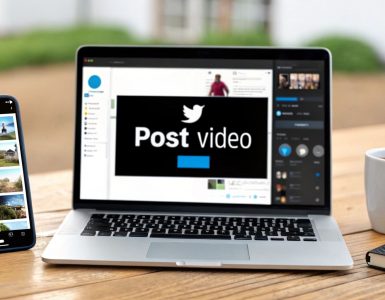Welcome to your comprehensive guide to mastering social media organization. In the fast-paced world of digital marketing, consistency is king. But how do you keep up with the demands of multiple platforms, ever-changing trends, and the constant need for fresh content? The answer lies in a well-structured social media content calendar template.
This isn't just about scheduling posts; it's about building a strategic framework for your brand's voice, fostering community engagement, and driving measurable results. A great template can transform your chaotic workflow into a streamlined, efficient process. It frees up valuable time to focus on what truly matters: creating content that resonates with your audience. A robust content calendar also helps you strategically plan your posts, allowing you to effectively organize and execute initiatives like running lead generation campaigns on social media.
This guide cuts through the noise to bring you a curated list of the top 11 templates and tools available today, from simple spreadsheets to sophisticated automation platforms. We will dive deep into each option, analyzing their specific use cases, practical limitations, and unique features with direct links and screenshots. Our goal is to help you find the perfect fit for your team, whether you're a solo entrepreneur or a large agency. We will explore how these templates can help you plan ahead, track performance, and maintain a cohesive brand presence across all your channels. Get ready to reclaim your time and elevate your social media strategy.
1. EvergreenFeed
Best for: Automating evergreen content distribution.
EvergreenFeed offers a powerful, specialized approach that redefines the concept of a social media content calendar template. Instead of providing a static spreadsheet, it delivers an intelligent, automated scheduling platform that acts as a dynamic content repository. This system is engineered specifically to solve a major pain point for marketers: the manual, repetitive task of recycling high-performing evergreen content.
Where a traditional template requires you to constantly copy, paste, and reschedule your best posts, EvergreenFeed automates this entire workflow. By integrating directly with Buffer, it transforms your collection of proven content into a perpetually active queue, ensuring your social profiles remain vibrant and engaging without constant manual intervention.
Key Takeaway: EvergreenFeed isn't just a template; it's a strategic automation tool. It excels at creating a hands-off system for consistently distributing your most valuable content, saving significant time while maximizing visibility and engagement.
Standout Features & Analysis
- Content Buckets: This is the core organizational feature. You can categorize your content into "buckets" like "Blog Posts," "Case Studies," "Quotes," or "Promotions." This allows you to set distinct scheduling rules for different types of content across various social profiles, providing granular control over your content mix.
- Intelligent Scheduling via Buffer: The platform seamlessly connects to your Buffer account. Once you set a schedule (e.g., "Post from the 'Tips' bucket every Monday and Wednesday at 10 AM"), EvergreenFeed randomly selects an item from that bucket and adds it to your Buffer queue. This ensures a varied, non-repetitive feed for your audience.
- Time Savings: Its primary value proposition is efficiency. Users frequently report saving over seven hours per week, time that was previously spent manually filling their social media queues. This frees up strategists and creators to focus on new content creation and community engagement rather than administrative tasks.
- Performance Analytics: The platform includes analytics to track the performance of your automated posts. This data is crucial for refining your strategy, helping you identify which pieces of evergreen content resonate most and should remain in active rotation.
Practical Implementation
To leverage EvergreenFeed effectively, start by conducting a content audit to identify your highest-performing posts. Organize these assets into logical categories before creating your content buckets within the platform. For instance, a B2B company might create buckets for "Industry News," "Product Tutorials," and "Company Culture." This structured approach ensures a balanced and strategic content flow that aligns with your marketing goals.
Limitations to Consider
The platform's greatest strength is also its primary limitation: its reliance on Buffer. To use EvergreenFeed, a Buffer account is non-negotiable. Additionally, while the free tier is excellent for exploring the core functionality, advanced features like deeper analytics and more extensive scheduling options are reserved for paid plans.
Access the Platform:
- Pricing: Freemium model; paid plans unlock advanced features.
- Website: https://www.evergreenfeed.com
2. HubSpot
HubSpot, a leader in marketing and sales software, offers a robust and highly practical social media content calendar template designed for strategic planners. This free resource, provided as a customizable Google Sheets file, is more than just a scheduler; it's a comprehensive planning tool that guides users from content ideation to execution. Its structure is particularly well-suited for businesses aiming to align their social media efforts with broader marketing campaigns.
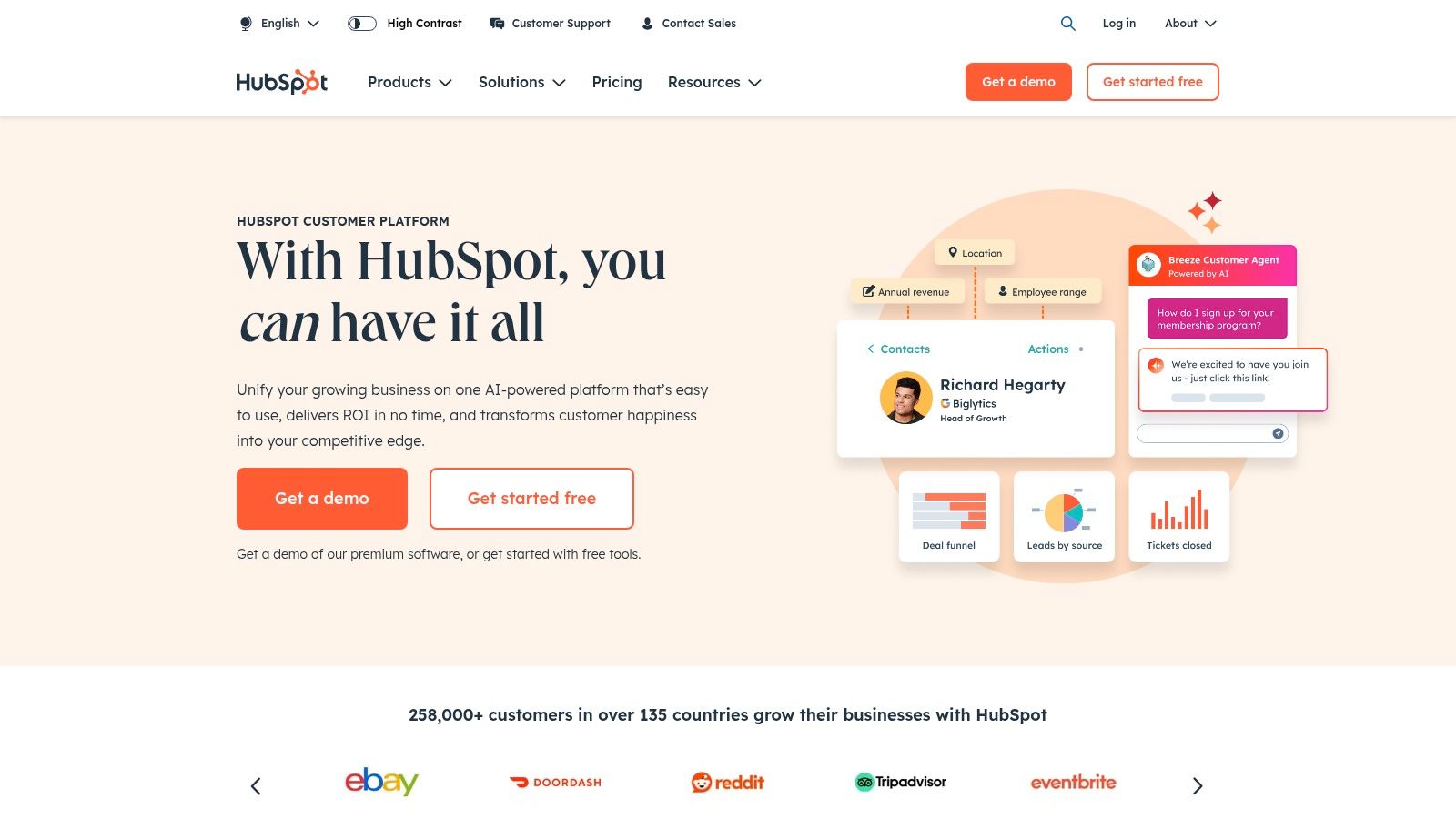
What makes HubSpot's offering stand out is its integrated approach. The template doesn't just provide columns for date and time; it includes dedicated tabs for evergreen content storage, a repository for your content library, and separate calendar views for monthly and weekly planning. This allows social media managers to efficiently recycle high-performing content and maintain a consistent brand voice across platforms.
Key Features and User Experience
The template is designed for ease of use within the familiar Google Sheets or Excel environment. It comes with clear instructions and expert tips embedded directly within the file, making it accessible even for those new to structured content planning.
- Platform-Specific Planning: Includes pre-formatted sections to plan content for various networks like Facebook, Instagram, Twitter, and LinkedIn.
- Content Repository: A unique tab lets you store and categorize evergreen posts, links, and assets for quick reuse, saving significant time.
- Campaign Integration: The layout encourages you to link social posts to specific marketing campaigns, helping you track their contribution to larger business goals.
Practical Tips and Limitations
To get the most out of HubSpot's template, customize the tabs to fit your specific workflow. For instance, add a column for "Approval Status" if you work in a team or a "Performance Metrics" column to track post-launch data directly in the sheet.
Our Take: This is an excellent entry point for small to medium-sized businesses looking to professionalize their social media planning. The focus on campaign alignment and content reuse provides a strategic advantage over simpler calendar templates.
A minor drawback is the access requirement. You must provide your name, email, and other business information to download the template, as it's part of HubSpot's lead-generation strategy. However, considering the quality and comprehensiveness of the resource, this is a small trade-off.
Access the Template: HubSpot Social Media Content Calendar Template
3. ClickUp
ClickUp moves beyond simple spreadsheets by offering a dynamic and collaborative social media content calendar template within its powerful project management ecosystem. Instead of a static file, ClickUp provides a living workspace where teams can plan, create, and schedule content in one place. This approach is ideal for marketing agencies and in-house teams who need real-time collaboration and visibility into the entire content lifecycle, from initial idea to final publication.
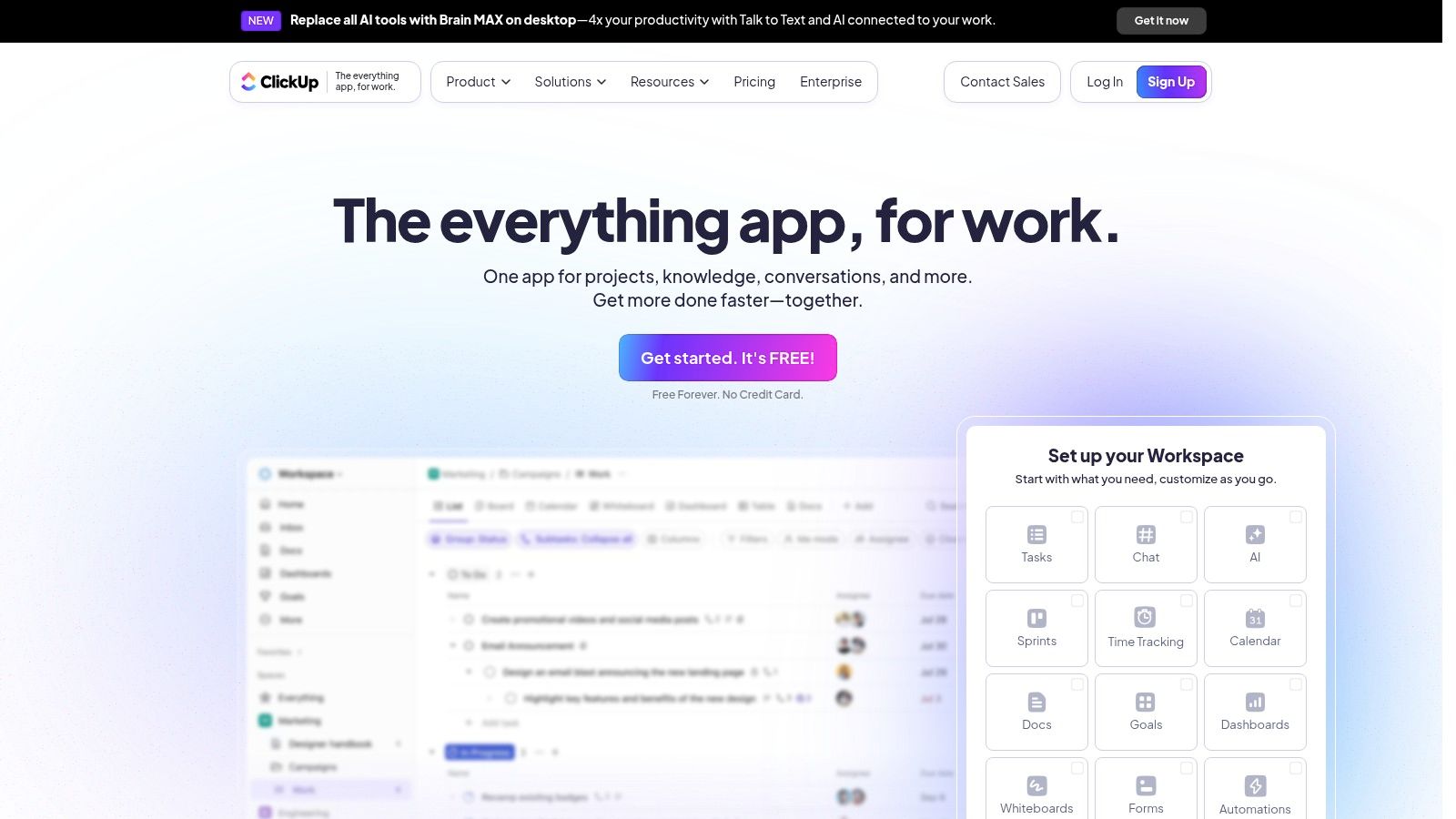
What makes ClickUp’s template a standout is its native integration with a full suite of project management tools. Each social media post can be a task with its own subtasks, assignees, deadlines, and comment threads. This transforms the calendar from a simple schedule into an interactive command center, connecting copywriters, designers, and managers seamlessly. The templates are free to use within the ClickUp platform, which itself offers a generous free-forever plan.
Key Features and User Experience
The template is highly customizable and leverages ClickUp's versatile "Views" feature, allowing you to visualize your content plan as a calendar, list, Kanban board, or timeline. This flexibility caters to different workflow preferences within a single team. The user interface is clean and modern, though it has a slight learning curve for those new to the platform.
- Collaborative Workspace: Assign tasks, leave comments, attach files, and track progress for each post directly within the calendar.
- Multiple Views: Switch between Calendar, Board, and List views to manage your content pipeline in the way that makes the most sense to you.
- Custom Statuses: Create custom workflows (e.g., "Idea," "Drafting," "In Review," "Scheduled") to see the status of every post at a glance.
Practical Tips and Limitations
To maximize its potential, integrate ClickUp Automations. For instance, you can set up a rule to automatically notify a manager when a post’s status changes to "In Review." Also, use the Custom Fields feature to add essential information like "Target Audience," "Campaign Pillar," or "A/B Test Variant."
Our Take: This is the ultimate solution for teams wanting to embed their social media planning directly into their project management workflow. It’s perfect for those who have outgrown spreadsheets and need a more robust, all-in-one system.
The primary limitation is that its full power is only accessible within the ClickUp environment. If your team is not willing to adopt ClickUp as a central tool, the template loses much of its collaborative advantage. New users may need some time to get comfortable with the platform’s extensive features beyond just the calendar.
Access the Template: ClickUp Social Media Calendar Template
4. Later
Later, a platform renowned for its visual-first social media scheduling, provides a free and accessible social media content calendar template that focuses on simplicity and strategic consistency. Delivered as a Google Sheet, this resource is designed for creators and businesses who need a straightforward tool to plan their posts, establish a regular cadence, and brainstorm content themes without the complexity of more advanced systems. It’s an excellent starting point for those transitioning from scattered notes to a structured planning process.
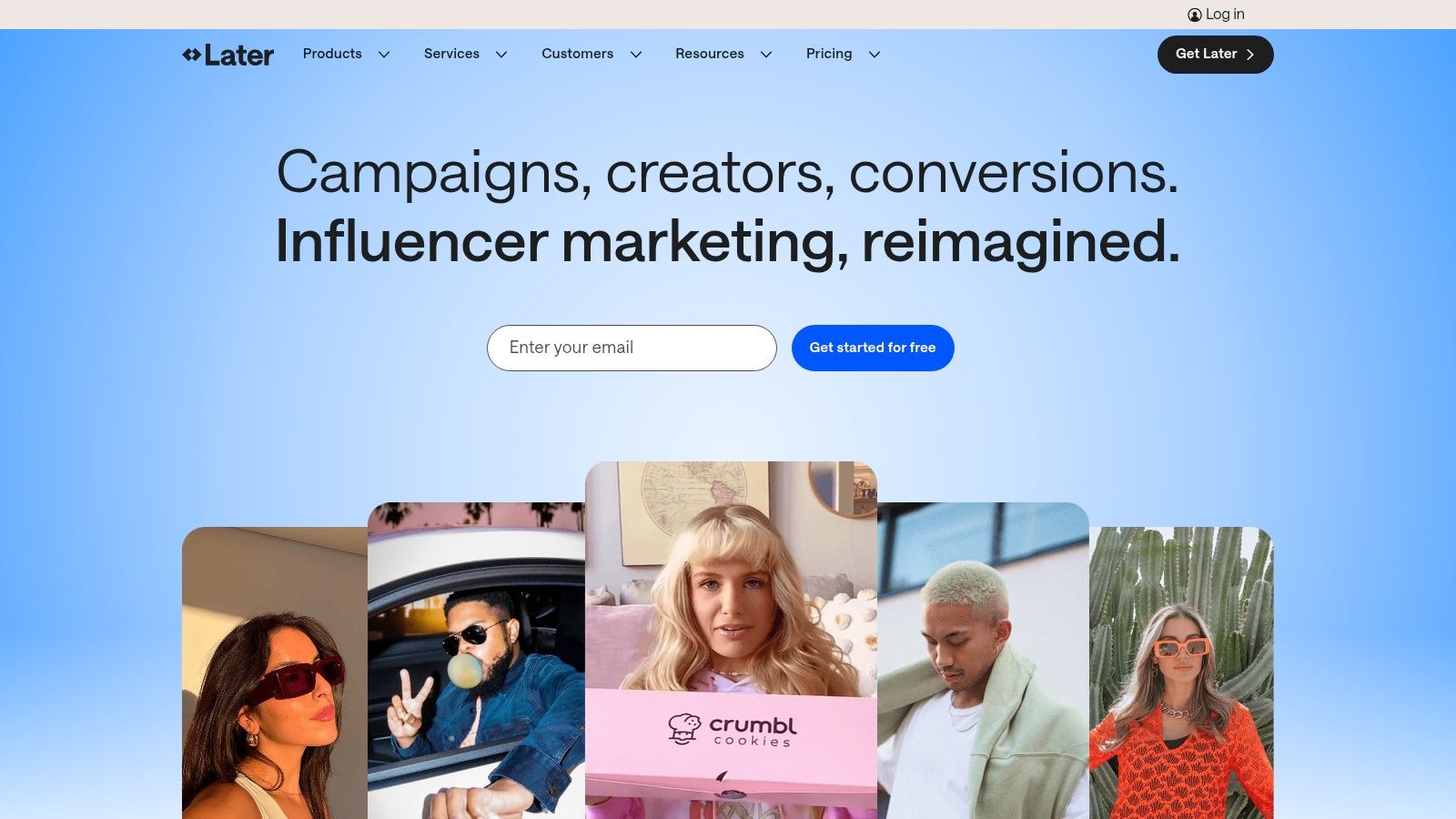
What sets Later's template apart is its emphasis on foundational strategy. It doesn’t just give you a blank schedule; it guides you through identifying core content pillars and setting clear goals for your social media presence. This approach ensures that even beginners are thinking strategically about why they are posting, not just what they are posting. The clean, uncluttered layout makes it easy to visualize your content for the week or month ahead.
Key Features and User Experience
The template operates within the familiar Google Sheets environment, making it instantly usable for most marketers. It's designed to be a direct precursor to using Later's own scheduling software, so the workflow logic is intuitive and aligns well with digital content management best practices. For more insights into how a solid calendar can elevate your strategy, you can find a deeper dive into crafting a content calendar for social media.
- Goal-Oriented Planning: Includes dedicated sections for defining your social media goals and content themes before you begin scheduling.
- Simple Weekly View: The core of the template is a clean, easy-to-read weekly calendar layout that helps you focus on maintaining a consistent posting schedule.
- Seamless Integration Path: The template's structure naturally encourages users to eventually migrate their planned content into Later's visual scheduling platform for auto-publishing.
Practical Tips and Limitations
To maximize its utility, use the "Content Themes" tab to brainstorm a variety of post types, such as educational, promotional, and behind-the-scenes content. This helps prevent your feed from becoming monotonous. You can also add a column for "Visual Asset Link" to keep your image or video files organized alongside your captions.
Our Take: This is the perfect template for solo creators, influencers, and small businesses who feel overwhelmed by overly complex spreadsheets. Its focus on foundational planning and a clean interface promotes consistency and thoughtful content creation.
The main limitation is its reliance on Google Sheets, which may not be ideal for teams that use other spreadsheet software. Additionally, while it provides a great planning foundation, it lacks the advanced features of a full-fledged content management system, such as analytics tracking or an integrated asset library.
Access the Template: Later Social Media Content Calendar
5. Asana
For teams deeply embedded in project management workflows, Asana offers a powerful social media content calendar template that transforms content planning from a simple schedule into an integrated, actionable project. Rather than a static spreadsheet, Asana’s template is a dynamic board within its robust work management platform. This approach is ideal for marketing teams and agencies that need to manage the entire content lifecycle, from brainstorming and creation to approval and publishing, all in one place.

What truly sets Asana's template apart is its native integration with comprehensive task management features. Each content idea or scheduled post becomes a task that can be assigned to team members, given a due date, and moved through customizable stages like "Drafting," "In Review," and "Scheduled." This seamless collaboration eliminates the need to juggle multiple tools, streamlining communication and ensuring everyone is aligned.
Key Features and User Experience
The template is intuitive for anyone familiar with Kanban-style boards or project management software. It visualizes the entire social media pipeline, providing clarity on what’s being worked on, who is responsible, and what’s coming up next.
- Integrated Task Management: Assign owners, set deadlines, attach files (drafts, images, videos), and track the progress of each social media post as a task.
- Collaborative Environment: Team members can leave comments, provide feedback, and give approvals directly on content cards, keeping all communication in context.
- Customizable Views: Switch between a calendar view for scheduling, a list view for a simple to-do list, or a board view to track workflow stages.
Practical Tips and Limitations
To maximize Asana's potential, use custom fields to add important details like the target platform, campaign name, or relevant URL. Automations can also be set up to move tasks to the next stage when a certain action is completed, such as a designer marking an image as "Ready for Review."
Our Take: Asana is the ultimate solution for collaborative teams that need more than a simple calendar. It excels at turning a content plan into a manageable, transparent, and highly organized project, significantly boosting team productivity and accountability.
The primary limitation is that it requires an Asana account, and its full power is unlocked when your entire team adopts the platform for their workflow. For solo creators or those who prefer a simple spreadsheet, the project management features might feel like overkill. However, the free tier is very generous and more than sufficient for many teams.
Access the Template: Asana Social Media Calendar Template
6. Sprout Social
Sprout Social, a major player in the social media management software space, offers a free and highly practical social media content calendar template. This resource, available as a Google Sheet, is crafted to enhance team collaboration and streamline content organization. It serves as an excellent gateway into the structured planning methodology that powers Sprout Social's premium platform, making it ideal for teams looking to establish a more disciplined and organized workflow.
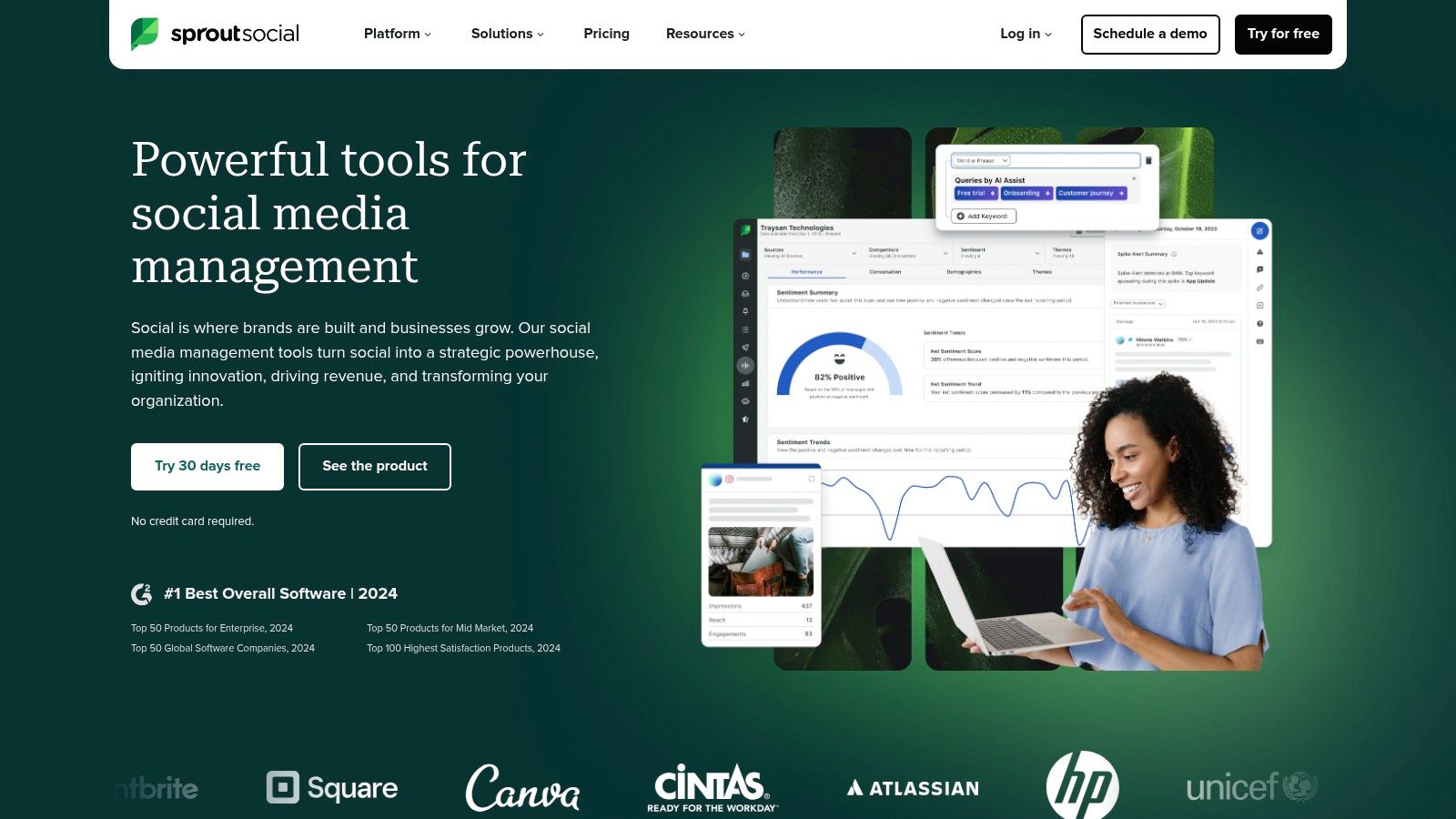
What distinguishes Sprout Social's template is its focus on collaborative efficiency. The layout is clean and intuitive, designed to be shared and updated by multiple team members without friction. It provides a foundational framework for planning, scheduling, and tracking content across various networks, encouraging a consistent and strategic approach to social media marketing.
Key Features and User Experience
The template operates within the familiar Google Sheets environment, ensuring accessibility and ease of use for most marketers. It comes with pre-built tabs and columns that guide you through a comprehensive planning process, from drafting copy to final approval.
- Multi-Platform Layout: The calendar is structured to manage content across different social media platforms simultaneously, with dedicated space for network-specific copy and assets.
- Team-Oriented Fields: Includes columns for assigning tasks, noting the status of a post (e.g., Draft, In Review, Approved), and leaving feedback, which is crucial for agency or team environments.
- Guided Planning: The template includes helpful tips and guidance on best practices for content planning and scheduling, directly embedding expert advice into your workflow.
Practical Tips and Limitations
To maximize the template's utility, customize the status-tracking columns to match your team's specific approval process. You can also use conditional formatting to color-code posts by platform or campaign for at-a-glance clarity.
Our Take: This is a perfect template for growing teams and agencies that need to coordinate efforts and maintain a clear, organized content pipeline. Its structure naturally supports collaborative workflows and provides a solid foundation for scaling up.
The primary limitation is that the template is designed as a lead-in to Sprout Social's full suite of tools. While the Google Sheet is powerful, its true potential for automation and analytics is only unlocked with a paid subscription to their platform. However, as a standalone resource, it remains a top-tier organizational tool.
Access the Template: Sprout Social Media Calendar Template
7. SocialPilot
SocialPilot, a well-regarded social media management tool, provides a free and impressively detailed social media content calendar template designed for precision and team collaboration. Offered as a downloadable spreadsheet, this resource is engineered for marketers who need a granular level of control over their content pipeline, from scheduling specifics to high-level campaign alignment. It’s an ideal solution for teams that require a central document to coordinate complex content strategies across multiple platforms.
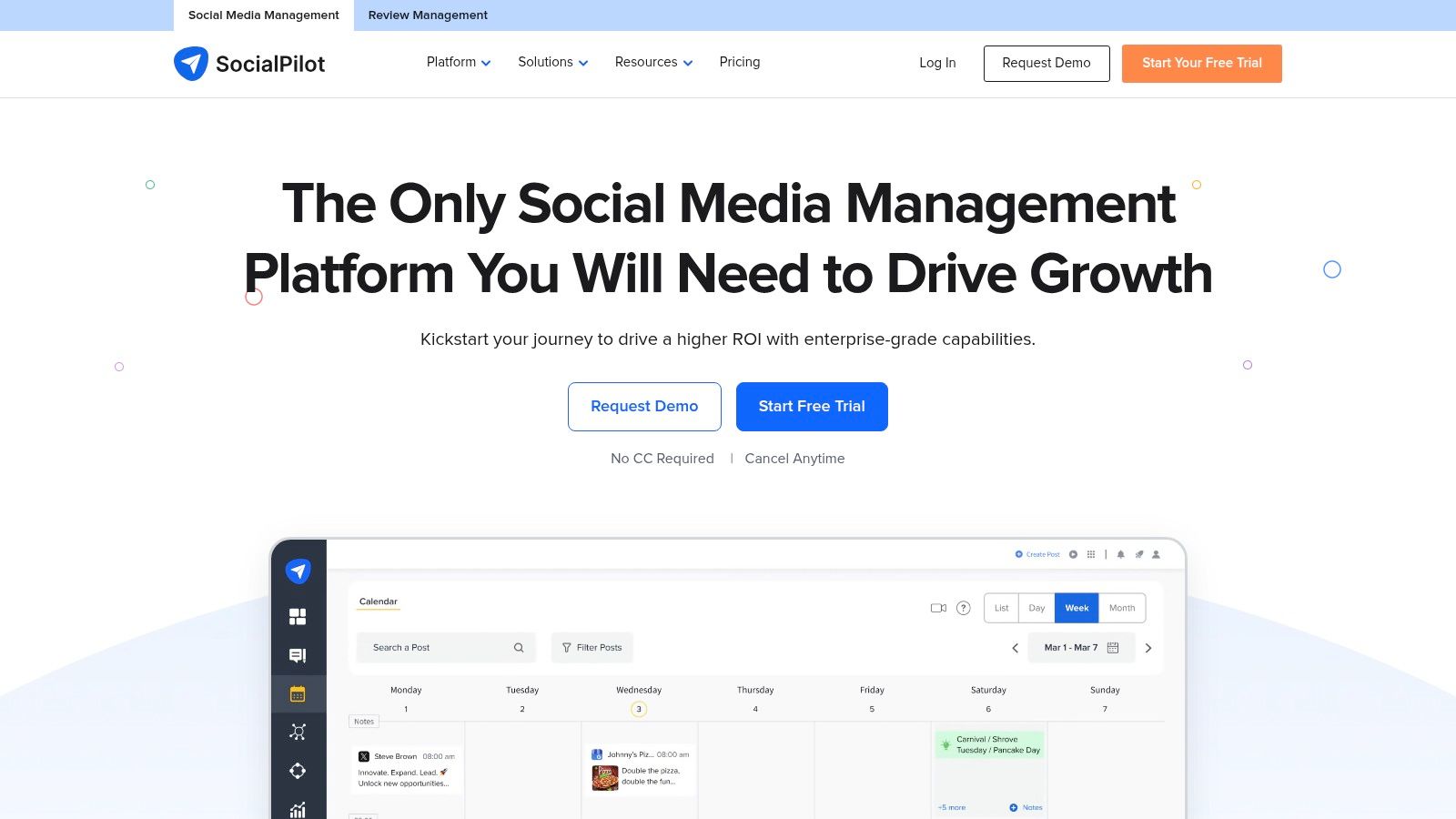
What sets the SocialPilot template apart is its meticulous design, which caters to the entire content lifecycle within a single, collaborative file. The template includes fields for day, date, time, platform, description, media, and URL, but also goes further by incorporating columns for status, campaign, and specific goals. This comprehensive structure helps teams stay perfectly aligned and track progress in real-time. This level of detail is a core feature often found in paid social media automation tools, which you can learn more about social media automation.
Key Features and User Experience
Built for functionality within Google Sheets or Excel, the template is straightforward for anyone familiar with spreadsheet software. Its layout is clean, with separate monthly and weekly planner tabs that allow for both long-term strategic views and daily task management.
- Granular Scheduling Fields: Includes highly specific columns for every element of a post, ensuring no detail is overlooked during the planning phase.
- Real-Time Collaboration: Designed to be a shared document where team members can update statuses, add content, and provide feedback simultaneously.
- Campaign and Goal Tracking: Dedicated columns allow you to link individual posts to broader marketing campaigns and their intended outcomes (e.g., lead generation, brand awareness).
Practical Tips and Limitations
For maximum efficiency, use the "Status" column to create a clear workflow (e.g., "Draft," "In Review," "Approved," "Scheduled"). This transforms the template from a simple calendar into a dynamic project management tool. Also, customize the "Platform" options to reflect your specific social media ecosystem.
Our Take: This template is a powerhouse for marketing agencies and in-house teams managing multiple clients or brands. Its structured, detail-oriented approach facilitates seamless collaboration and ensures brand consistency.
The primary limitation is its potential complexity for solo creators or beginners. The sheer number of fields might feel overwhelming if you're just starting with content planning. However, for those ready to scale their efforts, its thoroughness is a significant advantage. The template is free to download without requiring an email signup.
Access the Template: SocialPilot Social Media Calendar Template
8. Wepik
Wepik emerges as a fantastic resource for those who prioritize aesthetics and ease of use in their planning tools. Unlike spreadsheet-heavy options, Wepik offers a collection of visually engaging and professionally designed social media content calendar templates that are completely free and editable. This platform is ideal for freelancers, small businesses, and content creators who want a polished, brand-aligned calendar without needing advanced design skills.
What sets Wepik apart is its seamless integration with a user-friendly online editor. You don't just download a static file; you select a design and customize it directly in your browser. This approach bridges the gap between a functional planner and a beautifully crafted document, making the planning process itself more creative and inspiring. The templates are available in various formats, catering to different planning styles, from weekly overviews to detailed monthly schedules.
Key Features and User Experience
Wepik’s platform is built around simplicity and visual appeal. The editor is intuitive, featuring drag-and-drop functionality, a wide selection of fonts, and access to a library of graphic elements. This allows for deep personalization to match your brand's visual identity perfectly.
- Vast Template Variety: Offers a diverse range of styles, from minimalist and corporate to colorful and trendy, suitable for numerous industries.
- Intuitive Online Editor: The built-in editor allows for real-time customization of colors, text, and graphics, with no software installation required.
- Multiple Download Formats: Once customized, you can download your calendar as a PDF, JPG, or PNG, making it easy to print or share digitally with your team.
Practical Tips and Limitations
To maximize Wepik’s potential, start by choosing a template that closely aligns with your brand's existing aesthetic to save time on customization. Use the editor to add your logo and brand color palette to create a truly bespoke planner. You can even create different visual versions for different campaigns.
Our Take: Wepik is the perfect choice for visually-driven marketers and brands who want their internal planning documents to reflect their public-facing style. It excels at making the administrative side of social media management more engaging.
The primary limitation is functional; these templates are not dynamic planning tools. They lack the automated features or data integration capabilities of a spreadsheet or dedicated software. They are best used for high-level planning and visual organization rather than complex, data-driven campaign management.
Access the Template: Wepik Social Media Calendar Templates
9. Buffer
Buffer, a well-regarded name in social media management, provides a streamlined social media content calendar template that serves as an excellent gateway to more structured scheduling. Offered as a free, downloadable Google Sheet, this resource is designed for clarity and immediate use, helping marketers and small businesses organize their content pipeline without a steep learning curve. It acts as a perfect companion piece to Buffer's powerful scheduling platform.
The core strength of Buffer’s template lies in its simplicity and direct integration with proven social media strategies. It is not overloaded with complex features; instead, it focuses on the essential elements of planning: what to post, when to post it, and on which platform. This makes it an ideal starting point for those who feel overwhelmed by more intricate, feature-heavy spreadsheets.
Key Features and User Experience
Designed for straightforward implementation, the template functions seamlessly within Google Sheets or can be downloaded as an Excel file. It provides a clean, weekly view that helps visualize the flow of content across different networks, ensuring a balanced and consistent posting schedule.
- Simple Weekly Layout: The calendar is structured in a simple weekly format, making it easy to plan and track content for the upcoming days.
- Platform-Specific Columns: Dedicated columns for major platforms like Instagram, Facebook, LinkedIn, and Twitter are included, allowing for tailored content planning.
- Guidance on Posting Times: The template comes with helpful tips and suggestions for optimal posting times, based on general best practices, to help maximize reach and engagement.
Practical Tips and Limitations
To maximize the template's utility, use it as a foundational planning tool before scheduling posts within Buffer's application. You can learn more about how to effectively use the platform with a step-by-step guide to using Buffer. This combined workflow creates a powerful system for content strategy and execution.
Our Take: This is the perfect template for solo content creators or small teams who need a no-fuss system to get organized quickly. It bridges the gap between chaotic, ad-hoc posting and a fully automated, professional workflow.
The main limitation is that the template is a standalone file. To unlock features like automated scheduling, analytics, and team collaboration, you will need to subscribe to one of Buffer's paid plans. However, as a free organizational resource, it provides immense value and a solid foundation for any content strategy.
Access the Template: Buffer Social Media Calendar Template
10. TechRadar
While not a direct template provider, TechRadar earns its place on this list by offering something arguably more valuable for those ready to graduate from spreadsheets: a comprehensive guide to the best content calendar software. This resource is less about providing a downloadable file and more about empowering you to make an informed decision when choosing a dedicated software solution. It serves as an essential research hub for marketers looking to invest in a more powerful, automated tool.
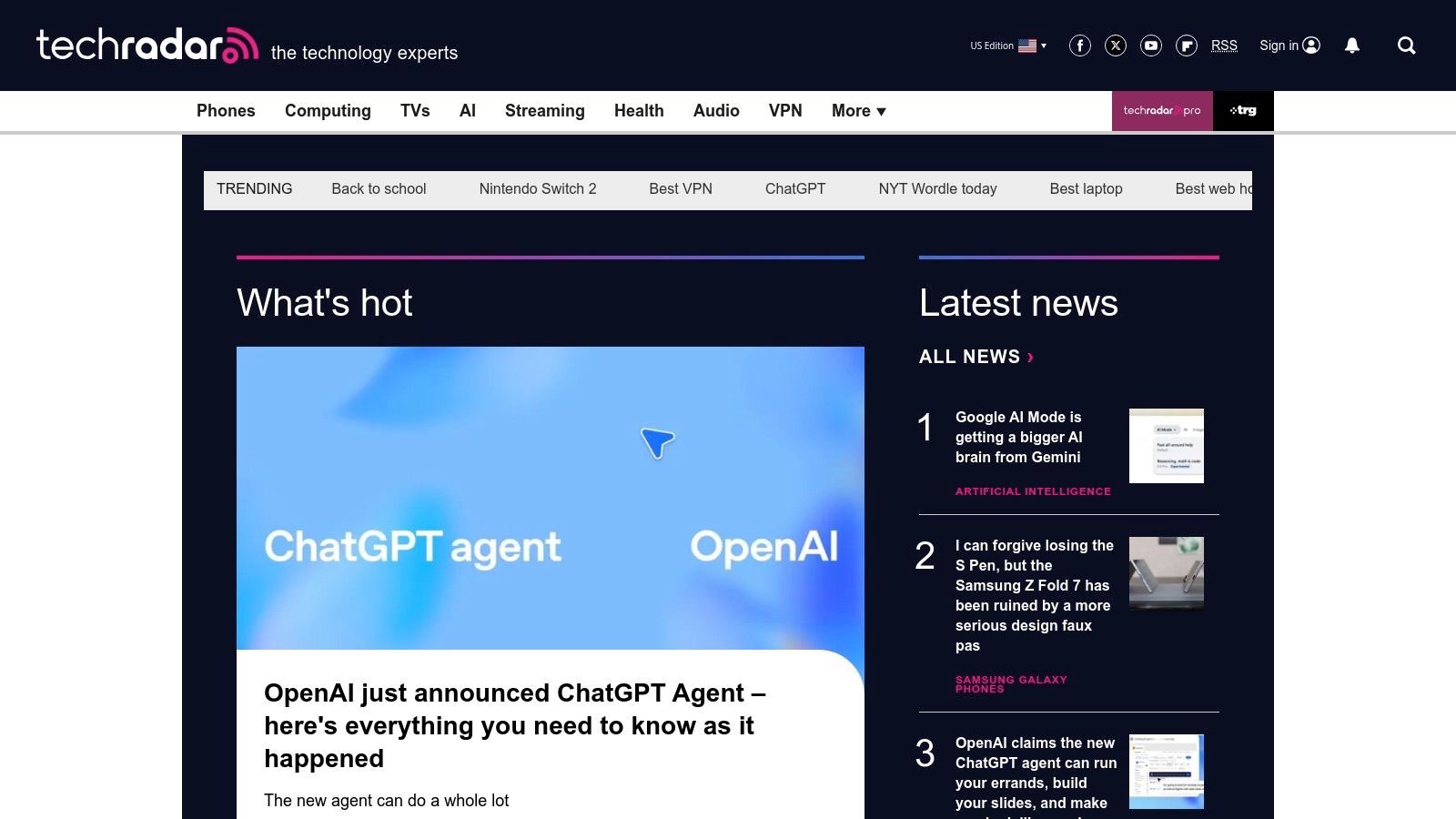
What makes TechRadar’s guide stand out is its detailed, comparative analysis. Instead of just listing features, it dives into the pros, cons, and ideal use cases for each platform, helping you match a tool to your specific workflow, team size, and budget. This approach saves you hours of individual research and trial-and-error with different software.
Key Features and User Experience
TechRadar presents its findings in a clear, easy-to-digest format. The guide reviews various tools that function as a dynamic social media content calendar template, offering insights that you wouldn't find on a product's marketing page.
- Comparative Reviews: Provides in-depth analysis of top-tier content and social media calendar tools, comparing them on features, pricing, and usability.
- Informed Decision-Making: Equips you with the knowledge needed to select a platform that fits your specific needs, whether for a small business or a large agency.
- Up-to-Date Information: The guides are regularly updated to reflect the latest software versions, features, and pricing changes in the market.
Practical Tips and Limitations
Use TechRadar's guide as a starting point. Shortlist two or three recommended tools that seem to fit your criteria, then take advantage of their free trials. This combines TechRadar's expert analysis with your own hands-on experience.
Our Take: This is an invaluable resource for anyone considering upgrading from a manual template to a dedicated software platform. It’s the perfect next step for marketers who find their spreadsheet-based social media content calendar template is no longer sufficient for their needs.
The obvious limitation is that TechRadar does not offer a downloadable template itself. The site directs you to paid software solutions, so it's best suited for users who have a budget and are serious about investing in a professional content management tool.
Access the Guide: TechRadar Best Content Calendar Software
11. Dash Social
Dash Social offers a streamlined and highly accessible social media content calendar template aimed at solo entrepreneurs, creators, and small businesses who need structure without complexity. This free resource is designed to alleviate the stress of inconsistent posting by providing a clear, ready-to-use framework. It focuses on the fundamentals: planning, scheduling, and maintaining a consistent online presence, making it an ideal starting point for those new to content strategy.
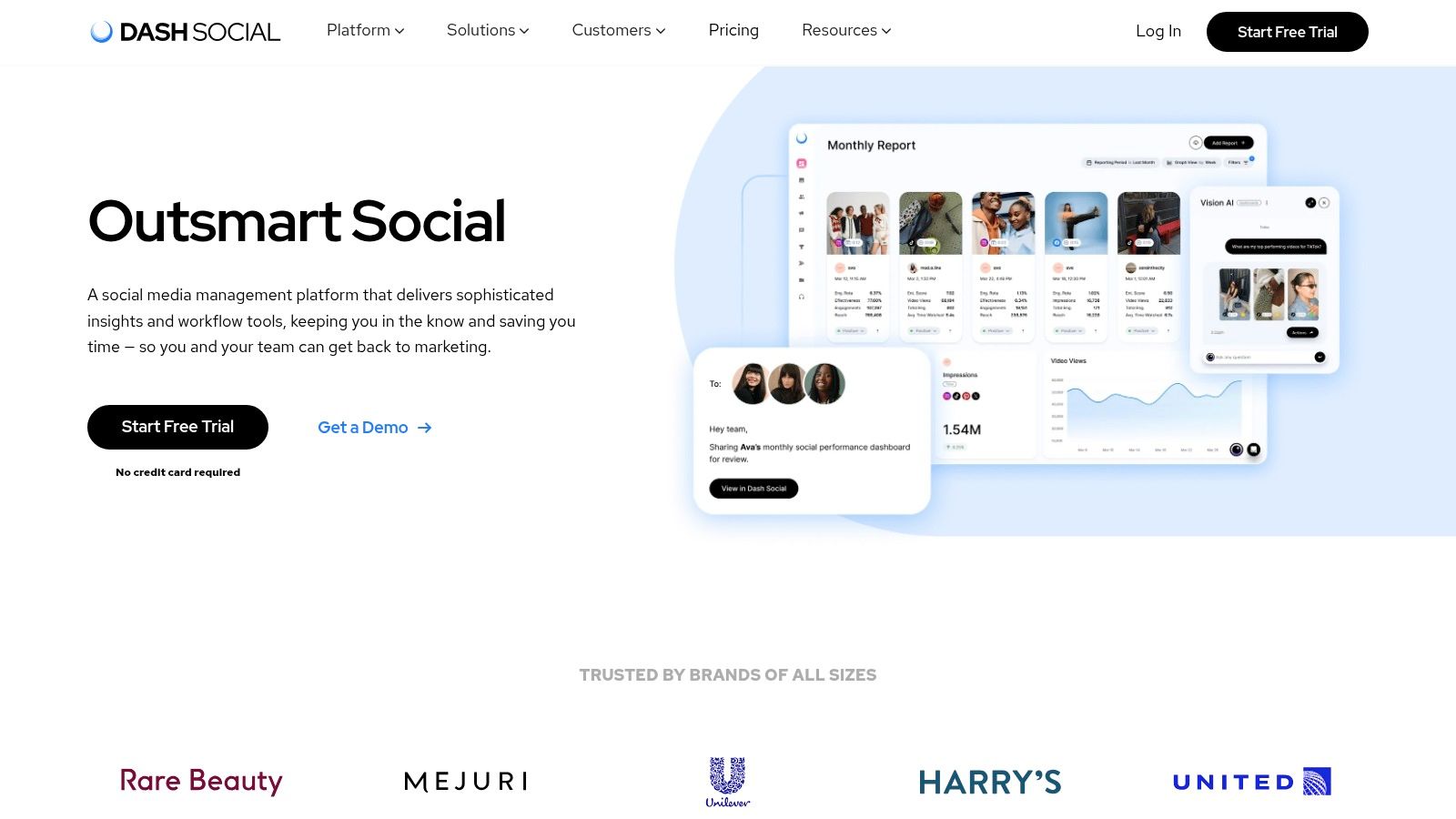
What makes the Dash Social template effective is its simplicity. It strips away the overwhelming features found in more advanced systems, presenting a clean and intuitive spreadsheet. This approach empowers users to focus on what truly matters for initial growth: consistency and goal alignment. The accompanying guidance helps users think critically about their content's purpose, ensuring every post has a clear objective.
Key Features and User Experience
The template is a straightforward download that works seamlessly in any spreadsheet software. Its user-friendly layout requires minimal setup, allowing you to begin planning immediately. The design prioritizes clarity over feature density, which is perfect for users who feel intimidated by overly complicated tools.
- Ready-to-Use Format: The calendar is pre-formatted, saving you the time and effort of building a planner from scratch.
- Consistency Guidance: It includes practical tips on how to maintain a regular posting schedule, a crucial factor for audience engagement and growth.
- Goal-Oriented Planning: The structure encourages users to define the goal for each piece of content, helping to connect social media activity to tangible outcomes.
Practical Tips and Limitations
To maximize this template's value, use a color-coding system to categorize your posts by theme (e.g., educational, promotional, behind-the-scenes). This visual cue will help you ensure content variety at a glance. You can also add a simple "Notes" column to jot down ideas or performance observations for future reference.
Our Take: This is the perfect no-frills social media content calendar template for beginners or individuals managing a single brand. It excels at building foundational habits like consistent posting and goal-setting.
The primary limitation is its lack of advanced features. It does not include a content repository, automated publishing integrations, or collaborative tools, making it less suitable for larger teams or agencies managing multiple clients. Access is simple, requiring an email signup to receive the free download link.
Access the Template: Dash Social Media Content Calendar Template
Top 11 Social Media Content Calendar Tools Comparison
| Platform | Core Features/Automation | User Experience & Quality ★ | Value Proposition 💰 | Target Audience 👥 | Unique Selling Points ✨ | Price Points 💰 |
|---|---|---|---|---|---|---|
| EvergreenFeed 🏆 | Automated posting via Buffer, categorized buckets, tailored schedules | ★★★★★ Easy setup, intuitive, saves 7+ hrs/week | Free signup risk-free, boosts engagement | Social managers, marketers, creators, SMBs | Autopilot Buffer integration, advanced analytics | Free tier; paid upgrades |
| HubSpot | Multi-platform templates, monthly calendar | ★★★★ Comprehensive & customizable | Free download, integrates marketing tools | Businesses planning social strategies | Expert-guided user guide | Free download only |
| ClickUp | Customizable templates, project management integration | ★★★★ User-friendly, team collaboration | Free templates, fits all team sizes | Teams of all sizes | Project mgmt integration, collaborative | Free templates; platform paid |
| Later | Simple planning template, strategic guidance | ★★★★ Easy to use, helps consistent posting | Free download | Google Sheets users, small businesses | Strategic content theme guidance | Free download |
| Asana | Customizable calendar, task mgmt integration | ★★★★ Enhances team collaboration | Free to use | Teams needing coordinated social management | Task mgmt integration, team collaboration | Free tier; paid upgrades |
| Sprout Social | Calendar template, content planning guidance | ★★★★ Organizes content across platforms | Free download | Teams & businesses managing multiple platforms | Platform integration, multi-platform support | Free template; subscription required |
| SocialPilot | Detailed planners, real-time collaboration | ★★★★ Detailed, collaborative | Free download | Teams wanting in-depth scheduling | Comprehensive fields, collaboration | Free template; may require paid tools |
| Wepik | Editable, customizable templates | ★★★ Easy customization, user-friendly | Completely free | Various industries | Variety of templates, simple interface | Free |
| Buffer | Customizable calendar, scheduling integration | ★★★★ Organization & scheduling support | Free download | Multi-platform users | Integration with Buffer scheduling | Free template; subscription required |
| TechRadar | Comprehensive reviews, comparative analysis | ★★★★ Extensive and current info | Free | Buyers researching content tools | Up-to-date tool reviews | Free |
| Dash Social | Ready-to-use template, schedule & performance tips | ★★★ User-friendly, consistency support | Free download | Individuals & small teams | Practical tips for content consistency | Free |
From Planning to Posting: Choosing the Right Calendar for Your Success
We have journeyed through a comprehensive landscape of tools, each offering a unique approach to conquering the chaos of social media management. From the robust, all-in-one platforms like Sprout Social and HubSpot to the incredibly flexible project management powerhouses of Asana and ClickUp, it is clear that the perfect social media content calendar template is not a universal solution. Instead, it is a deeply personal choice, one that must harmonize with your specific team structure, strategic objectives, and operational workflow.
The resources we have explored, including dedicated scheduling tools like Later and Buffer, and accessible design-focused options from Wepik, all share a common goal: to transform your planning process from a reactive scramble into a proactive strategy. The ultimate value of any template lies in its ability to provide clarity, foster consistency, and liberate your creative energy.
Synthesizing Your Options: A Practical Decision Framework
Choosing the right tool can feel overwhelming, but you can simplify the decision by asking the right questions. Your ideal social media content calendar template hinges on the answers to these critical queries.
1. What is your primary challenge?
- Disorganization and Missed Posts: A structured spreadsheet from a source like TechRadar or a visual planner like Later might be the perfect starting point to establish a basic routine.
- Team Collaboration Bottlenecks: Look towards platforms like Asana, ClickUp, or Dash Social. Their strength lies in assigning tasks, managing approvals, and creating a transparent workflow for multiple stakeholders.
- Lack of Performance Insight: If you are data-driven, a solution like Sprout Social or SocialPilot is essential. These tools integrate planning with powerful analytics, connecting your content directly to performance metrics.
2. How complex are your campaigns?
- For Solopreneurs and Small Businesses: A simple, free template or a straightforward tool like Buffer often provides more than enough structure without unnecessary complexity. The goal is efficiency, not a feature-heavy burden.
- For Agencies and Large Marketing Teams: The ability to manage multiple client accounts, intricate approval workflows, and multi-platform campaigns is non-negotiable. This is where comprehensive systems like HubSpot or enterprise-level plans from leading platforms demonstrate their true value.
3. What is your content creation workflow?
- Heavy on Evergreen Content: If your strategy involves recycling and repurposing high-performing posts, a specialized tool like EvergreenFeed can automate this entire process, ensuring your calendar is never empty.
- Need for Fresh Ideas: A well-structured calendar is only as good as the content within it. To ensure your content calendar is always filled with engaging posts, explore more fresh social media content ideas to keep your audience captivated.
Implementing Your New Calendar for Lasting Success
Once you have selected your template, implementation is the next critical step. Do not just download it and hope for the best. Set aside dedicated time to customize it to your brand’s specific needs. Add your key content pillars, recurring post series, important holidays, and campaign launch dates.
Most importantly, treat your new content calendar as a living document. It should be a dynamic blueprint for your social media strategy, not a rigid set of rules. Regularly review what is working and what is not. Use the insights gained to refine your approach, experiment with new post formats, and optimize your posting schedule. The right social media content calendar template is the one that evolves with you.
By investing this initial effort in selecting and customizing the right tool, you are not just organizing posts. You are building the foundational infrastructure for sustainable growth, authentic audience engagement, and measurable success. You are reclaiming your time, empowering your creativity, and strategically positioning your brand for a powerful and consistent social media presence.
Ready to put your content on autopilot and ensure your calendar is always full? EvergreenFeed automates the process of recycling your best content, turning your social media management into a hands-off, high-impact system. Stop manually refilling your schedule and start building a library that works for you by trying EvergreenFeed today.




